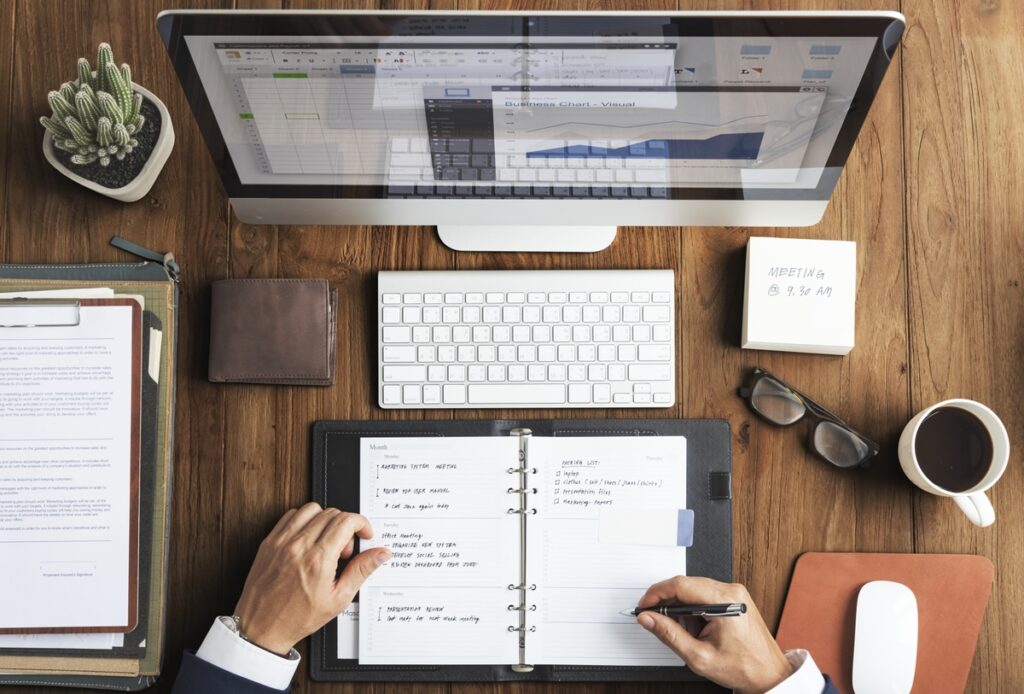Struggling to maintain a work-life balance while working either from or away from home?
Learning how to balance your work and personal life can be challenging. To help you boost your productivity, better manage your time, prioritize your work, and maintain a healthy lifestyle, discover these helpful tips and techniques.
I. Introduction
Achieving work-life balance is essential for our overall well-being and happiness. It allows us to maintain a healthy personal and professional life, avoid burnout and maintain our productivity. In this article, we will provide you with tips and strategies for balancing work and life effectively.

Tips for managing time effectively
II. Time Management
Time management is key to achieving work-life balance. Here are some tips for setting and prioritizing goals, managing time more efficiently, and minimizing distractions:
- Set achievable goals: Identify the most important tasks that need to be completed and prioritize them according to their urgency and importance.
- Use a planner or calendar: Write down your tasks and deadlines to keep track of your progress and make sure you’re on schedule.
- Schedule breaks: Take regular breaks throughout the day to recharge your energy levels and maintain focus.
- Minimize distractions: Turn off notifications on your phone, avoid checking social media during work hours and find a quiet and organized work environment.
The importance of prioritization in balancing work and life
III. Prioritization
Prioritizing tasks is an essential component of work-life balance. Here are some techniques for identifying and prioritizing important tasks, as well as strategies for delegating tasks:
- The Eisenhower Matrix: This method involves dividing tasks into four categories based on their urgency and importance. Urgent and important tasks are prioritized, while tasks that are not urgent and not important are eliminated.
- The ABCDE method: This technique involves labeling tasks according to their level of priority. “A” tasks are the most important, while “E” tasks are not important at all.
- Delegation: Identify tasks that can be delegated to others, such as colleagues or employees. This can help free up your time for more important tasks.

Self-care techniques to maintain a healthy work-life balance
IV. Self-Care
Self-care is important for maintaining a healthy work-life balance. Here are some techniques for practicing self-care and strategies for incorporating it into your daily routine:
- Practice mindfulness: Take a few minutes each day to clear your mind and focus on the present moment.
- Exercise regularly: Physical activity can help reduce stress and increase energy levels.
- Get enough sleep: Prioritize getting enough sleep each night to ensure that you are well-rested and ready for the day ahead.
- Take breaks: Schedule breaks throughout the day to give yourself time to relax and recharge.
Productivity hacks for better work-life balance
V. Productivity
Productivity and work-life balance are closely linked. Here are some techniques for increasing productivity and strategies for maintaining motivation:
- Set realistic goals: Break down large tasks into smaller, more manageable tasks to avoid feeling overwhelmed.
- Use productivity tools: There are many apps and tools available that can help you manage your time and increase productivity.
- Take breaks: Regular breaks throughout the day can help you maintain your energy levels and increase productivity.
- Celebrate your achievements: Recognize and celebrate your accomplishments to help maintain motivation and positivity.
VI. Achieving work-life balance requires a combination of time management, prioritization, self-care, and productivity. By following the tips and strategies outlined in this article, you can maintain a healthy balance between your personal and professional life. Remember to be patient with yourself and make adjustments as needed to find the right balance for you.

